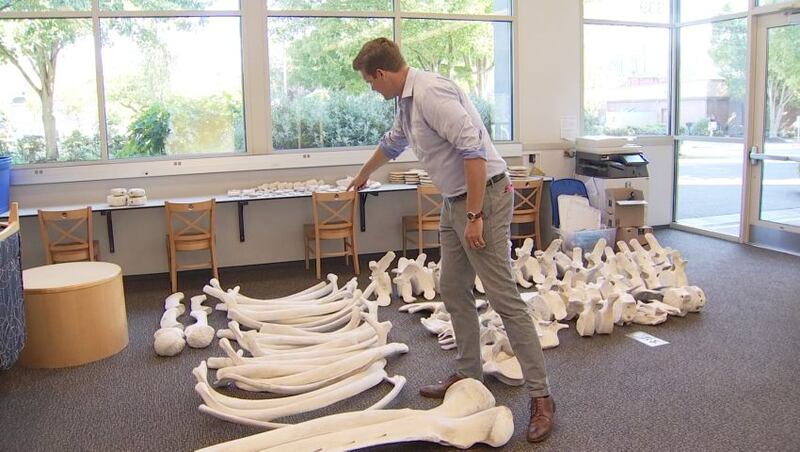SEATTLE — Standing here among these whale bones, Peter Moe is living out a tale years in the making.
“A lot of people joke around and call me Captain Ahab,” said Moe, an assistant professor of English at Seattle Pacific University, referencing the whale obsessed sea captain in Herman Melville’s 1851 novel Moby Dick. “Which is I guess understandable. I’ve always had an interest in whales ever since I was a kid.”
But unlike the fictional Ahab, Moe isn’t seeking revenge in his pursuit to bring a whale skeleton to SPU’s Eaton Hall.
“I saw that our science building had this beautiful giant open space, I just thought you know - you could hang a whale skeleton up there,” Moe explained.
Moe spearheaded the effort a few years back and got the green light from various authorities like the National Oceanic and Atmospheric Association and Washington’s Department of Fish and Wildlife.
Scroll down to continue reading
More news from KIRO 7
- Police seek additional victims after 21-year-old arrested on suspicion of child rape
- Coronavirus: Inslee issues proclamation for COVID-19 Food Production Paid Leave Program
- Seattle brewer puts anti-police markings on cans
- Do you have an investigative story tip? Send us an email at investigate@kiro7.com
Then, in February of 2019, a 29-foot gray whale washed up on the shore of Longbranch, off the Key Peninsula in Pierce County. Moe and his team retrieved the bones of the juvenile female, which biologists determined had been stranded alive but was emaciated and had experienced an attack by killer whales before she died.
Moe and his team of volunteers began an arduous months long process which included burying the bones in horse manure, digging them up and leaving them to dry in the sun until they look like this.
On Monday, Aug. 17, students will start the three week course to assemble the 250 whale bones. Moe is joining forces with Rus Higley, manager of the Marine Science and Technology Center at Highline College, who has built three other whale skeletons.
“I think that’s one of the most exciting parts of this project is that it’s truly interdisciplinary. SPU is a liberal arts school and we believe the different disciplines can speak to each other and help us to better understand the world,” Moe said.
When people see the completed skeleton hanging from the ceiling of the lobby at Eaton Hall, Moe hopes it will spark a fascination about the world around us. You might say that’s Moe’s white whale.
“I feel like it’s a gateway into the unknown and into mystery,” Moe added. “I’m hoping it will be evocative and get people’s imagination going and getting them to ask questions.”
The public is also invited to take part in the three week course by logging onto a series of online guest lectures about whales. The guests will discuss everything from the biology of a whale, its role in art, to conservation. For a calendar of the series, visit this link.
Cox Media Group








